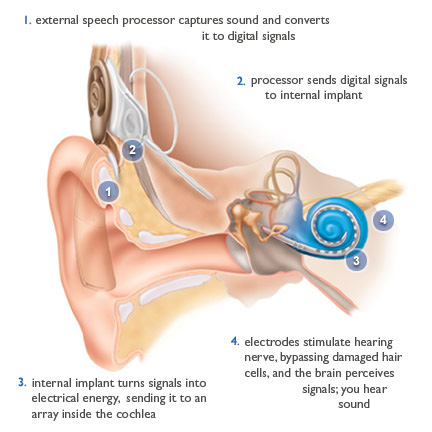Giraud et al. (2001)
From Psy3241
Cross-Modal Plasticity Underpins Clinical Study Language Recovery after Cochlear Implantation
Basically, in this study the cochlear implants restored hearing to the deaf participants by stimulating the auditory nerve with about sixteen electrodes. Cochlear patients must work hard to hear, mainly because their sound signal is usually deteriorated. After the procedure the patients take a while to get accustomed to their new hearing devices. In the time after their implant, patients must rely on lipreading in order to understand what they are hearing because their implant is unable to discriminate similar sounding words (i. e. duck/buck). Therefore, after a period of time in which the patient is lipreading to comprehend, visual cortex begins to activate when patients listen, even in purely auditory tasks (eyes closed). The amount of activity in the visual cortex was dependent on the amount of time the patient had their implant. The longer the time, the greater the amount of visual cortex activity when listening. Link to the actual article by Giraud et al. WHAT IT'S LIKE TO HEAR WITH A COCHLEAR IMPLANT Background info on cochlear implants

